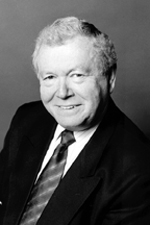By Rabbi Dow Marmur

JERUSALEM–To mark the latest heated exchanges about Jerusalem between the Chairman of the Palestinian Authority Mahmoud Abbas and the Prime Minister of Israel Binyamin Netanyahu, I decided to make my first trip on the city’s new light railway (streetcar). It took me to the Arab villages – now Jerusalem suburbs – of Beit Hanina and Shuafat, and on to the new Jewish neighboruhood of Pisgat Ze’ev, not coincidentally named after the spiritual father of the Likud Party, Ze’ev Jabotinsky. Like many such neighbourhoods, Pisgat Ze’ev was established after the Six Day War as a “fact on the ground” to claim the whole city for the State of Israel. Like the two villages and many like them, it’s part of Jerusalem.
Abbas claims that Jerusalem has always been Arab and will always remain so. Netanyahu maintains that it’s “Israel’s eternal and undivided capital.” Even if, for argument’s sake, both are right, my ride reminded me that Israel has the might. Though the railway may be a nuisance in the centre of town and is said to be a burden on the businesses along its route there, it does provide direct and relatively quick access to both Arab and Jewish areas of the city.
Whatever its critics may say about the light railway, the government is bound to like it because it makes the city even more “united” – though not necessarily “eternal” – than it may have appeared before. The rail line seems to be an effective link between predominantly Jewish West Jerusalem and the outlying areas.
That’s probably why the government is apparently now considering a railway network in the West Bank. Whatever the explanations, the real reason is obvious: it’ll bring the occupied territories closer to the rest of Israel and make the “two-state solution” even less realistic than it already seems to be.
This is not to say that the Government of Israel is the only side reluctant to engage in the so-called peace process. The Palestinians contribute to its failure at least as much. The much heralded Palestinian accord between Abbas’ Fatah Party and Iran-sponsored Hamas is a sure formula for continued separation, because Hamas seems to insist that it won’t have anything to do with Israel other than fighting it until it’s defeated.
Jerusalem is, of course, the most sticking of the many sticking points. My train trip to suburbia has, therefore, confirmed my skepticism about the prospect of an Israeli and a Palestinian state living side by side in peace and harmony. Perhaps that’s why the leader of Israel’s Labour Party no longer talks very much about the peace process and more about social justice. She seems to imply that the future of the Jewish state lies in the way it deals with those for whom it’s responsible rather than quibbling about borders.
So what does the future hold? Probably more of what we’ve lived with since the Six Day War. The light railway in Jerusalem and the proposed railway network in the West Bank may be based on that assumption.
If neither side is prepared to accept a divided Jerusalem, the side with more clout will carry the day. Israel’s determined effort to reduce geographic divisions through urban transportation is yet another sign of its upper hand. Though there’re cogent reasons to be unhappy about the situation, we may have to concede that the alternative would be much worse for all concerned, including the Arab residents.
*
Rabbi Marmur is spiritual leader emeritus of Holy Blossom Temple in Toronto. Now dividing his time between Canada and Israel, he may be contacted at dow.marmur@sdjewishworld.com